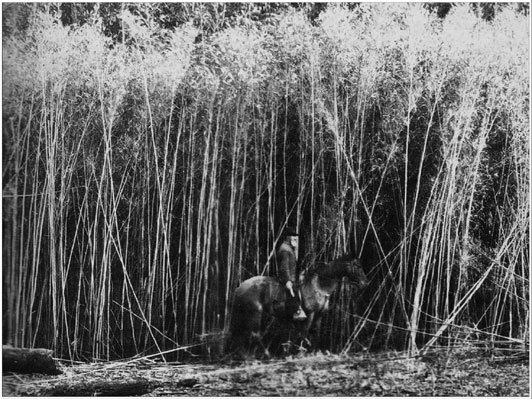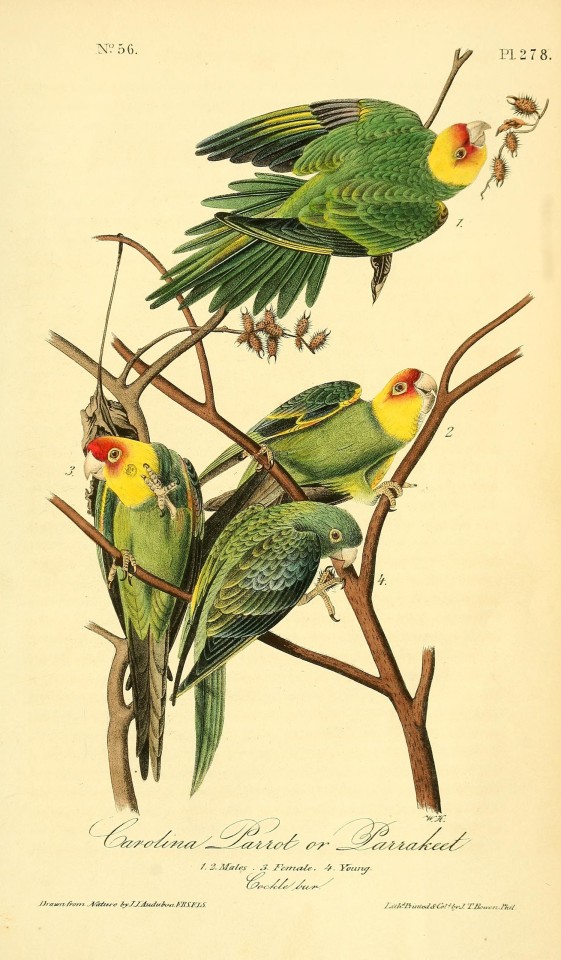#Canebrake
Explore tagged Tumblr posts
Text










Rattler Canebrake 🌑
QTR-LT Stop | Carbon Black
RSB/M | Carbon Black
G10 XOS-H | Honeycomb | Black FR4 | 3-Slot
G10 XOS | Honeycomb | Black FR4 | 4-Slot
G10 XOS-H | Honeycomb | Black FR4 | 4-Slot
MonoLift Riser | Carbon Black
LEAF DBAL-A3 Sight | Carbon Black
Hardtop Mount | Carbon Black
MCX CSMR Button | Carbon Black
- RS
#RailScales#QTR Stop#QTR-LT#RSB/M#G10 Scales#XOS#XOS-H#MonoLift Riser#LEAF Sight#DBAL-LEAF#Hardtop Mount#CSMR#Sig#Sig Sauer#MCX#Rattler#Canebrake#SRD762Ti-10#Romeo9T#Juliet6#Surefire Scout Light Pro#M340DFT-Pro Turbo Mini#Steiner DBAL-A3#Unity Tactical AXON-SL#Magpul 300BLK PMAG#M-LOK#Profoto
138 notes
·
View notes
Text
Headspace hotel has infected me with the tism about canebrakes, mostly in the searching for content and not finding any
5 notes
·
View notes
Text
Easement
I did not see a parakeet. Nor did I expect to because the last time anyone saw the kind I could have seen was one hundred years ago. But had I seen one, it would have had a green body, a yellow neck, and a red crown, like a granny smith apple, turning into a golden delicious, ending with a fuji flourish. Unlike apples though, this parakeet would have been indigenous. Back in his day, Audubon fixed four of them, all on a branch of matured cocklebur, their name swirling below–Carolina Parrot or Parakeet—just as live ones would have swirled above and outside his page, until they all passed (a century later) into life only re-presented (drawings, pictures, reminiscence, taxidermy).[1] So, I did not see a parakeet.
But I did see cane, as I was in a canebrake. Switchcane, rivercane and hill cane, the genus Arundinaria trio, bamboos native to North America. I am not sure which species of cane I was in, though my guess is switchcane (A. tecta), as rivercane (A. gigantea) also has the name of giant cane for its remarkable height—at maturity it is taller than a grown man on a grown horse; and hill cane (A. appalachiana) has a topographic preference that did not describe the place where I stood.

Nevertheless, they all look similar, more like plants in diagram rather than plants in dirt, their linear stems appear pencil drawn, their lance like leaves seem generated by straight edge. Enmassed, canebrakes look like early computer-generated greenery before sinuosity was possible. In a way, they are an early plant—a fire rolls through, clears the understory, perhaps takes a tree or two down with it; the flames cease and cane is among the first to resurface, and resurface quickly for it is not as dependent on reseeding as it is on its rhizome.[2] Like the longleaf pines which it once accompanied over the land, it looked forward to the fire next time. Out of the flames came thickets, which though they may have barred other plants, they were quite welcoming to Carolina parakeets, warblers, “cougars, bobcats and wolves” canebrake rattlesnakes, creole pearly eye butterfly and untold others.[3] Walls of cane were a kind of mass housing for the many migrant, squatter and settling organisms of the southeast. They (particularly river cane) also provided materials of home and place making for humans, as their straight stems were (and still are) gathered by Native American communities especially the Cherokee.[4] Once hollowed out, canes can become basket or blowgun, mat or flute, or—as has become a rustic object— fishing poles. There are not many significant canebrakes today. Cattle ate them, draining and development cleared them, fire suppression stymies their return; the scattered groupings I see along the road are remnants of a lost empire, holding out amidst a concrete ground that stifles them, a dense forest that smothers them, and farmland that suppresses them. But unlike the parakeet they remain. Though, like the parakeet, I was not in the canebrake to see the cane—it fortunately just happened to be there.
I only saw the canebrake, because I was in a conversation easement, which I only noticed because of a small, yellow, all caps sign—"NORTH CAROLINA SOIL AND WATER CONSERVATION EASEMENT BOUNDARY”. “Easement” is one of those legal terms that I knew more by general use than specific meaning. Modified by the word “conservation” easement suggested the land was protected, but why, by who and to what extent was unclear until I looked it up later. The NC Department of Environmental Quality defines conservation easements as: “voluntary legal agreements designed to ensure the long-term viability and protection of the natural resources within a surveyed and recorded boundary. The easement planning process establishes allowances and restrictions that are beneficial to the landowner, the easement holder, and the environment.”[5] The conservation easement then is not foremost a means of protection, but (much more interesting I think), it is a way of organizing layers of rights and access upon a property. Someone owns the lands, but the easement gives some else a right to use it (or not use it, in a way, when conservation is the right being exercised) which in turn inflects the rights and possibilities of both the one who possess the land and others (like myself) who neither own the land, nor hold an easement, but still gain some benefit from the easement’s existence (i.e. enjoying a now rare landscape feature).[6] The yellow sign that alerted me to presence of the easement was nailed into a sweet gum tree. In the FAQ for conservation easements one of the questions asks: “Are there way to precisely identify the boundaries of a conservation easement?”
The answer:
As part of the restoration project, all easement corners were surveyed and monumented in the ground with metal rods. Most of these rods are also topped with 2” diameter aluminum caps. DEQ also uses a variety of methods to post easement boundaries including signage, metal posts, and tree blaze. These may be a witness post or witness tree, located near the line but not the exact location of the boundary.[7]
In some ways, my studies right now could be described as figuring out the extra-legal work of these “witness trees” and their “artefacted” forms into “witness posts” (and columns and panels and all sorts of other wooden things that “witness” human contracts and contact).[8] It gave me pause then, after reading the FAQ to realize that I had witnessed a witness tree that still witnesses (instead of being one in a historical document or text), but that in the moment the sweet gum’s legal function had not even registered to me. I was much more taken by the train of ants along its trunk likely extracting honeydew from aphids up in the canopy, and by the trail of Virginia creeper going up further than the ants, in search of its own luminous food. From the tree’s perspective, witnessing a survey has been only one frame in a very long film still being made around, and around and around it.
In truth, I did even see the easement sign until I was near the tree. And the reason I was near the tree is because a few feet away from it, along the road was the initial object of my attention—a set of black and yellow object marker signs denoting some feature adjacent to the road, a feature which is this case was a culvert underneath the road. Culverts, in their projecting pipe form look like engineering/infrastructural litter, debris left over from a drainage project. In addition to being the ugliest kind they are also the cheapest and least efficient—they do little to channel a flow directly into their opening, which limits how much comes out their exit, potentially leading to the water overflowing the road. Luckily, the culvert I came to see is the recessed box kind with wings extending on its side to welcome water into its inlet, guiding it towards its outlet.[9] Embedded in the earth, moss covered, and a bit worn, there is a minimalist beauty to this kind culvert that does not readily betray the complexity of its task at once to convey ground traffic above and the traffic of water underneath. On the outlet side, some of the water pooled, its clear bottom supported small fish and tadpoles, while its silty edge moistened mosses and grasses and a bit further up also the canes. The water this culvert channels comes from the Indian Branch River, which drains into Deep Creek River, which drains into the Tar River, which drains into the Pamlico Sound, which joins the Atlantic Ocean. Follow these larger waters and you’ll find the larger history of the canes and the Cherokees, the parakeets and the many trees which have witnesses the work of so many kinds of settling, the human version being the most recent, but likely not the last. Though we often like to think otherwise, our homes and other feats of building are ultimately done under a kind of “natural easement”, the land allows us access for a while, but as all the other prior communities of plants or persons show, no claim of possession is final, no root is long and deep enough to always remain (though many can be long remnant). Maybe I will be able to spend a good deal of my life following these state and nation spanning roots, weavings, waters and rhizomes.
But it is not yet time to go so far out. Afterall, the only reason I saw the signs for the culvert, which put me in range to see the blaze on the tree, which brought me close enough to see a canebrake, which led me to imagine what it would be like to still be able to see parakeets, was because I pass the culvert nearly every day when I am home. Fifteen hundred feet from the front door, I have crossed this place many times running, enjoying the brief respite of shade provided by the gums before the land opens again for the farms; and I have driven by it many more times on the way to town, the car bouncing lightly over the culvert. So, I have noticed this spot for nearly thirty years, but this is first time I have “witnessed” the three hundred years of history flowing and growing in it. Either part separately is valuable—to live in a place and feel its features or to come to a place and learn its features, nesting sensations (the shade of the trees, the bump of the road…) or nesting histories (extinction, settlement…). But to bring them together, may, for a moment sustain that special sense which is just able to catch an apple-colored dart zipping across the far end of the eye.

Photos
[1] The Carolina Parakeet, once common from New York down to the Gulf of Mexico, seems to have gone in the first half of the 20th century. The last documented one, named Incas, died in captivity in 1918. It is unclear exactly why it went extinct though habitation destruction seems part of the problem. See: https://johnjames.audubon.org/last-carolina-parakeet and https://www.smithsonianmag.com/science-nature/why-carolina-parakeet-go-extinct-180968740/
[2] There is strong interest in canes and restoring canebrakes. For a general overview see: Barret, Richard; Grabowski, Janet; Williams, M.J. "Giant Cane and Other Native Bamboos: Establishment and Use for Conservation of Natural Resources in the Southeast" U.S. Department of Agriculture, Natural Resources Conservation Service, 2021. For a 18th account of cane use in North Carolina see: Lawson, John. A New Voyage to North Carolina. London: 1709. Digitized at https://docsouth.unc.edu/nc/lawson/menu.html. Lawson recorded many ways that cane was used by the Cherokee.
[3] See: Platt, Steven G., Christopher G. Brantley, and Thomas R. Rainwater. “Canebrake Fauna: Wildlife Diversity In A Critically Endangered Ecosystem.” Journal of The Elisha Mitchell Scientific Society 117, No. 1 (2001): 1–19.
[4] For contemporary work to maintain these traditions see: https://theonefeather.com/2012/05/22/river-cane-important-cherokee-cultural-staple/
[5] See: https://www.deq.nc.gov/about/divisions/deq-administrative-divisions/north-carolina-stewardship-program/living-your-conservation-easement#Aretherewaystopreciselyidentifytheboundariesofaconservationeasement-8672
[6] Though my enjoyment in this case was not a right because this easement is not public (i.e., I was trespassing).
[7] See link on note 4.
[8] Other have already done some of this work. See for example: Miller, Daegan. This Radical Land. Chicago: University of Chicago Press. 2018.
[9] Here is a wonderfully informative video on culverts: https://www.youtube.com/watch?v=15XJDmawbYU
Images:
Carolina Parrot or Parakeet” in The Birds of America: From Drawings Made in the United States and Their Territories Volume 4. John James Audubon. New York: J.B. Chevalier, 1842. p.306.
Image 3208 (Canebrake in Northeast Louisiana early 1900’s). USDA Bureau of Plant Introduction. See note 2 for source.
7 notes
·
View notes
Video
Canebrake, Wagoner, OK 5/18/24 by Sharon Mollerus
0 notes
Text
"ohhhhh the world is ending we'll never recover from this" the other day at work we found rivercane at a site that had been left to degrade for at least two decades. There's still time.
#if u dont know rivercane creates a critically endangered ecosystem called canebrakes#it's a bamboo species native to the us#and provides habitat to many species#and it's in our cities waiting for us! it's not gone!!!#💋
11 notes
·
View notes
Photo

A new variant has been added!
Canebrake Groundcreeper (Clibanornis dendrocolaptoides) © Ronaldo Garcia
It hatches from black, dense, large, long, loud, old, and rusty eggs.
squawkoverflow - the ultimate bird collecting game 🥚 hatch ❤�� collect 🤝 connect
4 notes
·
View notes
Text
And there's more if you choose to see it
There is beauty in every day and kindness too
The children at my work are too young to understand that they don't need to bring home all their winter gear every day so when a child leaves without all their stuff the other children will run to them holding their snow pants or boots
Someone on here found out that the US has native bamboo (canebrake) that they had never heard of before so they made a post about it, then they researched it and they grew some just so the plant wouldn't go extinct. It's not their job they just cared so much and were interested in the plant that they did that. That's a kindness not only to people but also the planet, the animals, the local ecosystem
People sharing fundraisers trying to help others that they've probably never met before
People supporting strikes and boycotts that maybe don't directly affect them but it helps others
Children who are still learning the rules of the world trying their best to help their friends
It's beautiful
The thing that really gets me about humanity is the kindness that follows tragedy and coming together as a community and loving each other
When the Titanic sank, the Carpathia raced to provide any help they could. They didn't have to, certainly, no one expected them to, but they did
and when the Mont Blanc exploded in Halifax, Nova Scotia, Canada one man Patrick Coleman went back to his post to warn the railways to stop the trains preventing hundreds from dying
on 9/11 there were 38 planes that had nowhere to land so the Air traffic controllers had them land in Canada in a small town called Gander and all the people there banded together to provide shelter and food for all the 6,000+ passengers on the planes
in a small town in Minnesota, USA 20 people lined up to give CPR to a man who had had a heart attack until paramedics could arrive and saved his life because of it
thousands of years ago somebody cared for a person who had broken their leg, which would usually be a fatal injury, and nursed them back to health
every tragedy has a kindness in it, people helping others in the face of loneliness, desperation, and destruction
and then there is the kindness we show when no huge tragedy has happened but life has happened instead
An adult in the time of King Tut made in him a tunic with ducks on it and a chest with ducks and sandals and earrings with ducks because he loved them so much
people take time out of their day to help an old person cross the street
chasing after somebody because they dropped something and you are trying desperately to return it
leaving food for homeless people
caring for others through an illness
and then there is the community
humans banding together
singing together, a sad tragic song and making it happy and soothing because they are singing it together
humans coming together to let someone buy back their farm at auction
helping one another, being kind and loving each other in the face of tradegy and despair this is what it means to be human
#humans being kind#humanity#canebrake#you may have to look for it#but its there#i promise#i love this world and i want to make it better#so we have to find the joys in every day
242 notes
·
View notes
Text
2024 is the year I start applying all my hobbies for practical use
plants -> foraging
painting/sculpture -> car repair
fish -> aquaculture
i am about to get my hoosier on fuck this stupid city life im getting in the dirt
#text#i wanna cultivate clams and mussels and canebrake and trout literally give me a piece of the river i can fix it
4 notes
·
View notes
Text







6.75” Rattler Canebrake
QTR Stop | Terra Bronze
RSB/M | Terra Bronze
HTP Solo’s | Matrix | FDE | 1.5-Slot
HTP Solo’s | Matrix | FDE | 1-Slot
MonoLift Riser | Terra Bronze
MCX CSMR Button | Terra Bronze
- RS
#RailScales#HTP Solo's#HTP Scales#QTR#QTR Stop#RSB/M#RailScales SF Light Mount#MonoLift#MonoLift Riser#MCX CSMR#Sig Sauer#MCX#MCX Rattler#Rattler#Rattler Canebrake#SLX762C-QD#Romeo4T & Juliet4#Surefire Scout Light Pro M-LOK#HRF Concepts SOC NGAL#L3Harris NGAL#Unity Tactical FAST FTC Omni#Poi Tac ST-MCX#DuraMag#M-LOK#Profoto
98 notes
·
View notes
Text
In my universe the batman expy(s) are kinda the bad guys (needlessly violent, territorial, nosy, and smug)
#the family is called Gatecrash and the word Gatecrash is now slang for a person who displays these traits#most people hate them#need names for them but one of them is called Canebrake Gatecrash (aka cane/cain) and he sucks
0 notes
Text
@leafstranger I found it! The blog is @headspace-hotel they have a ton more on it on their blog.
Where's that Native North American Canebreak/Bamboo post?
I was walking Pip near work the other day and spotted this, which I recalled using as a kid to make panpipes of a sort, and wondered if it was one of the North American native canebreak/bamboo species people get excited about:

I've walked that path before during this time of year and this is the first time I've spotted it this thickly -- previously, it was just the occasional plant.
11 notes
·
View notes
Text
Certainly there were times, and maybe there still are places, where simple neglect will allow a disrupted landscape to return to anything resembling a natural state. But here? On the east coast of the US, where we've been destroying habitat and employing high-control, extractive land management, and expanding urban and suburban areas, for four hundred years now, there is very little left of what was.
The chestnuts are gone. The canebrakes are gone. The wetlands remain only where they were least profitable to remove. The elm suffers, the grasslands are obliterated, the old growth is all logged long since.
I've got front row seats for some of what happens if you leave this land alone. The woods are choked by invasive multiflora rose and Japanese honeysuckle. I don't think I've ever seen a native honeysuckle in person. The fields, left to grow, grow nothing but non-native grasses, poison ivy that sets no berries and feeds no birds, invasive Tree of Heaven saplings that poison the soil with their root exudate, and the occasional hardy locust sapling. There are no flowers there, save a few ironweed and asters late in the year.
If I just leave it alone, those things will keep going, native plants long gone from this place will only appear by some miracle, and this landscape will continue to not support many of the plants, animals, and insects once native to this place. It needs my help. (It needs a lot more than just my help, but we'll see). I can't "return it to its natural state", because ecosystems do not have enduring natural states. But I can see that this land supports a far greater density and variety of native species, and I will do that.
2K notes
·
View notes
Note
got a special interest in US venomous snakes (especially pit vipers) and would love to see some pics
Well, let's look at a nice spread of US pit vipers!


Cottonmouth (Agkistrodon piscivorus), swimming, family Viperidae, North TX, USA
Venomous.
photographs by Jimmy Martin

Northern Cottonmouth (Agkistrodon piscivorous), juvenile, family Viperidae, coastal North Carolina, USA
Venomous.
This individual is especially (abnormally) colorful.
The subspecies Eastern and Western Cottonmouths are no longer considered valid. The Florida Cottonmouth is now considered a separate species.
Photograph by Myles Masterson

Eastern Copperhead (Agkistrodon contortrix), family Viperidae, coastal North Carolina, USA
Venomous.
photograph by Brett Nature Wildlife Images

Broad-banded Copperhead (Agkistrodon laticinctus), family Viperidae, west central TX, USA
Venomous.
Formerly considered a sub-species of A. contrortrix.
This population was formerly called Trans-pecos Copperhead, which is no longer considered a valid taxon.
photograph by Haplochromis

Arizona Ridgenose Rattlesnake (Crotalus w. willardi), family Viperidae, Santa Cruz County, Arizona
Venomous.
Photograph by Mitchell Hawkins

Timber Rattlesnake (Crotalus horridus), family Viperidae, FL, USA
Venomous.
This color/pattern variety found in the SE United States is called the “Canebrake Rattlesnake”. It was once considered to be a subspecies of Timber Rattlesnake, but it is no longer considered to be a valid subspecies.
photograph by Christina Shaffer

Northern Black-tailed Rattlesnake (Crotalus m. molossus), family Viperidae, Arizona, USA
Venomous.
photograph by Morgan la Sorella
269 notes
·
View notes
Video
Canebrake, Wagoner, OK 5/17/24 by Sharon Mollerus
0 notes
Text
I am listening very hard for the birds lately cuz we sighted a timber/canebreak rattlesnake out here. I ain't gonna go looking for the danger noodles, but if the birds are pitching enough of a fit there's reason to believe he or another snicker sneck is around. Then I might very carefully look.
everywhere in the world theres birds. and you should listen to them
#east tx#timber rattlesnake#canebrake rattlesnake#my dad saw a huge chonkomonus danger noodle crossing the road while my ass was still in the house#so dissappointed i didn't see it#one of the most anticipated neighboring species i havent seen yet
16K notes
·
View notes
Text


I went to the Columbus Zoo!
This sweet Eastern Diamondback was snuggling with two Canebrake rattlers. Allegedly there was an Eastern black ratsnake in there somewhere, too, but it was sleeping elsewhere in the enclosure.
My Unpopular Opinion on zoo reptile husbandry: Just because it's in an accredited zoo doesn't necessarily mean it's the most up-to-date or accurate husbandry. Personally it gives me the ick to see at least four snakes of three different species co-habbed in a single enclosure that has a smaller ground footprint than a recommended minimum-sized enclosure for one single snake... But admittedly I'm not a zookeeper so I assume they know something I do not.
#snake#snakes#reptile#reptiles#reptiblr#rattlesnake#rattlesnakes#canebreak rattlesnake#zoo#Columbus Zoo#eastern diamondback rattlesnake#Crotalus#Crotalus sp.#seems iffy to me#but what do i know
102 notes
·
View notes